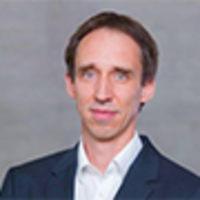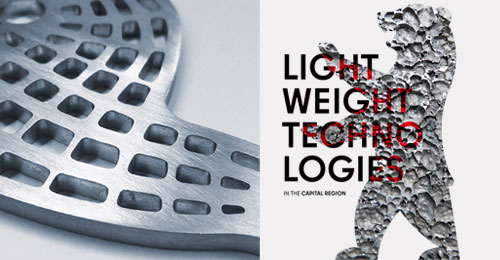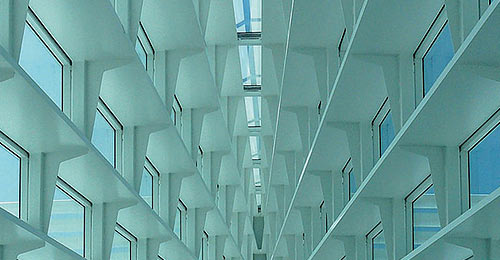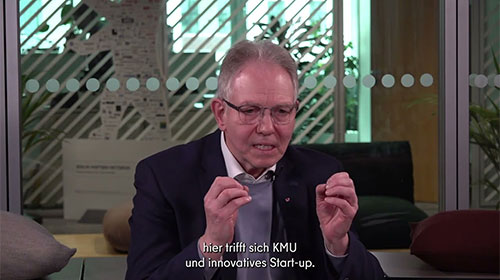Lightweight construction in Berlin
Functional integration and the use of lightweight materials offer cost-effective and flexible alternatives for a wide range of industries.
Lightweight construction is one of the game-changer technologies for Germany and thus a driver for many sectors of Berlin's industry: In the traffic and transport industry, medical technology, aerospace and construction, lightweight construction takes place along the entire value chain. The potential of this cross-sectional technology reaches from the design to the selection of the material to the finished product and recycling. For example, materials account for 43.2 percent of manufacturing costs, with 22 percent of SMEs already using lightweight materials.
(Source: Federal Ministry for Economic Affairs and Climate Action, 2023)
Berlin stands out in the field of lightweight construction due to its very well-positioned research in the field of materials and its excellent innovation landscape. A special industry focus of the capital lies in the mobility sector, in particular in the automotive and rail vehicles. But in medical technology, too, major international players are already based at the location alongside SMEs.
Numerous networks and clusters also promote the ecosystem for networking and the transfer of innovation between business and science across sectors. In the capital region in particular, there are opportunities for future development priorities in the area of new (composite) materials. In addition, Berlin has a high density of companies and research institutions with a great deal of expertise in the technologies of additive manufacturing and digitalisation, which are important for lightweight construction.
Lightweight construction as a cross-cluster future technology in Berlin and Brandenburg
The capital region bundles its growth industries and key technologies in various clusters that are closely interlinked and cooperate across the federal states. As part of the innovation strategy of the two states, lightweight construction is included in the master plans of the Transport, Mobility & Logistics (VML), Healthcare, Metal and Plastics & Chemistry clusters. For example, in addition to additive manufacturing, lightweight construction is named as one of the innovation topics in the VML cluster.
Berlin-Brandenburg Lightweight Construction Initiative
The increasing importance of lightweight construction for the future viability of Berlin-Brandenburg as an industrial location was reaffirmed in 2023 by the adopted Berlin-Brandenburg lightweight construction initiative.
The main aim of the lightweight construction initiative is to raise the profile of the capital region as a lightweight construction industry region by means of joint activities across sectors and clusters by presenting competitive companies that are active in lightweight construction and showcasing the increasing value creation both within Germany and internationally.
Together with the Brandenburg Cluster Plastics and Chemistry and the Cluster Metal, Berlin Partner is organizing a cross-state lightweight construction network with more than 60 stakeholders from industry, start-ups, research institutions and associations. The diversity of stakeholders shows that the region has a well-functioning value chain covering all aspects of lightweight construction, from research and development, design software, production of semi-finished products to material suppliers and research as well as global networks for professional 3D printing and composite materials.
Other events at trade fairs such as JEC World in Paris, ILA and InnoTrans facilitate dialog with the clusters in the capital region and underline the importance of lightweight construction as a transformation technology for resource-efficient, sustainable production.
Selection of research institutions
- Technische Universität Berlin
- Bundesanstalt für Materialforschung und -prüfung
- Fraunhofer Institute for Production Systems and Design Technology (IPK)
- Helmholtz-Zentrum Berlin
- Hochschule für Wirtschaft und Technik HTW Berlin
- BHT Berliner Hochschule für Technik
- Weißensee academy of art berlin
- Technical University of Applied Sciences Wildau
- Brandenburg University of Technology Cottbus Senftenberg
- Fraunhofer Institute for Applied Polymer Research IAP
Selection of associations
Composites United
With around 400 members, CU is one of the world's largest networks for fibre-based multi-material lightweight construction. With its eleven clusters and networks, the international industry and research association headquartered in Berlin promotes the cross-industry use of hybrid and high-performance lightweight composites.
Network Lightweight Metal Brandenburg
In the field of metal and hybrid lightweight solutions, LMB is active as an open association of players from science and industry. The focus is on the initiation and support of innovative individual and joint projects for the development of new lightweight construction concepts, processes and products.
Mobility goes Additive
MGA is the leading international network of companies, institutions, and research organisations developing 3-D printing applications for professional use in various industries.
Medical goes Additive
The network seeks to exploit the full potential of 3-D printing for use in medicine and to improve the quality of life, taking advantage of synergies from the Mobility goes Additive network.
Selection of company builders, incubators, accelerators, and labs
Advanced Materials Competition (AdMaCom)
Lighter, smaller, firmer, more conductive, more resistant, more sustainable, less expensive: just a few of the requirements for new materials. Young materials researchers are supported in the search for the materials of the future by mentoring and coaching programs offered as part of the Advanced Materials Competition.
MotionLab.Berlin
MotionLab.Berlin offers hardware-oriented startups prototyping space in a large production hall in Treptow-Köpenick to promote creative synergies.
IAM Hub Berlin
The IAM Hub in Berlin is a Co-working space that is intended to be the home of all 3D printing activities and help bring the technology into industrial mass production.






